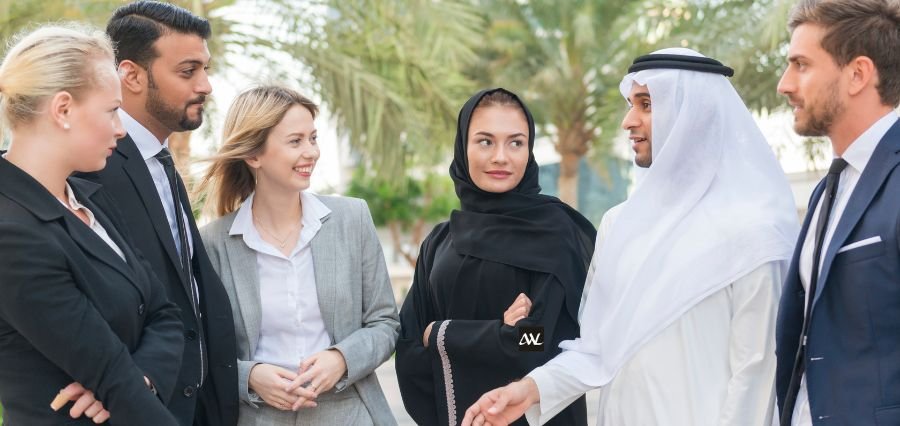The Power Shift: Middle East Leadership Constructing a New International Discourse
Middle East leadership is in seismic shift, fueled by ambition, innovation, and strategic intent for growth. Once tied to the wealth of oil and local turmoil, the new Middle East leadership context is all different — one of visionary reforms, economic diversification, and international diplomacy. Not only are they transforming the region itself but are shaping world forces in such fundamentally different arenas as trade, technology, and sustainability.
While Middle Eastern nations move into world prominence, their leaders are looking inward to consider the meaning of leading, collaborating, and governing in the 21st century. With agenda-driven vision and promise-filled campaigns, Middle East leadership is being summoned on front pages worldwide.
Visionary Transformation: A New Paradigm of Middle East Leadership
Governments of nations such as the UAE, Saudi Arabia, and Qatar have moved beyond the temporal picture of the good old days. The transition towards modernization, innovation, and integration is a revolution in Middle East leadership. They are constructing technologically driven cities and implementing green energy, and they are also investing in education, health care, and cyber-infrastructure.
For example, through vision aspirational planning such as Saudi Arabia’s Vision 2030, investing and de-oiling in industries such as tourism, entertainment, and technology are the focus. The visionary action aligns with leadership today — innovation and tradition intertwine, and sustainability.
Middle East leadership today is enlightened thought, keeping pace with global trends but with local identity. It is a leadership formula that is visionary, flexible, and inclusive.
Women in Leadership: A Moment of Definition in Middle East Leadership
The most powerful of all the Middle East leadership transformations is likely to be to bring more women into leadership. Traditionally, men dominated leadership, but the tide is irretrievably turning in the opposite direction. At the ministerial cabinet level, through entrepreneurship and in diplomacy, women across the region are shattering stereotypes and redefining assumptions about leadership.
Other countries like the UAE went a notch further and placed women in mid-level cabinet positions and promoted gender-synchronized policymaking. Saudi Arabia, once notorious for strict social controls, now boasts a resounding celebration of the success of women in law courts, the skies, and the playing field. Such success is not just empowering but proof of a broader cultural sea change.
Women leadership turns Middle East leadership into yet a more beautiful saga of diversity, equity, and progressiveness — exactly the kind of qualities required for moving ahead in the direction of sustainable development and global credibility.
Economic Diversification: A Strategic Imperative for Middle East Leadership
No leadership story today would be complete without an economic vision. Middle East leadership has already been bravely willing to push diversification — understanding that growth in the future must be established on something more than hydrocarbons.
As a result of the investments that it has made in technology parks, renewable energy, fintech companies, and logistics hubs, the UAE is getting transformed into economies of knowledge. The UAE’s early leap into space technology and AI is an indicator of how Middle East leadership is leading the world forward with its vision by bringing it on a par with global innovation.
And, naturally, mega events such as EXPO 2020 in Dubai and the FIFA World Cup 2022 in Qatar not only boosted tourism but also proved the capabilities of the nations in terms of logistics and culture. They reassert the region as a vanguard progressive trendsetter in world affairs — led by localists with a global outlook.
Sustainability and Climate Leadership: Green Goals of Middle East Leadership
During climatic uncertainty, Middle East leadership is stepping up to the sustainability challenge. Once fossil fuel-dependent, the Middle East is spearheading green campaigns and clean energy revolutions.
Saudi Arabia’s Green Initiative, the UAE Net Zero by 2050, and trendsetting solar and hydrogen investment are all green leadership telling signs. They attest Middle Eastern leaders understanding the need to reconcile national development and planetary well-being.
Most importantly of all, however, is the way in which Middle East leadership is bringing sustainability into national strategy, infrastructure planning, and education. Beyond the verification of international cooperation, it enables long-term climate change resilience.
Diplomatic Evolution: Middle East Leadership in Global Affairs
Another column of new Middle East leadership is its advanced diplomacy and foreign policy of international cooperation. Its political leaders are practitioners in practice of soft power politics, employing world investment, international foreign policy, and cultural exchange to build bridges not walls.
Normalizing treaties such as the Abraham Accords signal the peak of a fresh pragmatic generation of leaders that subscribe to peace, economic cooperation, and shared development values. Middle Eastern leaders are creating room for the East and the West, and placing the Middle East in the middle as a facilitator and mediator of global diplomacy.
This diplomatic adulthood bears witness that Middle East leadership is forward-looking, not backward-looking — establishing a forward-looking identity outside of Middle Eastern politics.
Youth Empowerment and Education: Empowering the Next Generation of Middle East Leadership
Any vision would be incomplete without investing in the future generation. Middle East leadership has stepped forward to empower the youth through targeted education reforms, entrepreneurial incentives, and digital upskilling.
Smart schools, coding camps, innovation centres, and scholarship schemes are paving the way for a knowledge economy. They realize today’s children to be the leaders of tomorrow — and for the right atmosphere for development, innovation, and solving problems to be in place.
With over 60% of the population across the region under the age of 30, not only is it prudent — it is imperative — that this emphasis upon youth is at its core. Middle East leadership is bringing the rest of the world up to speed with a demonstration by uniting national aspiration and generational aspiration.
Conclusion: A Defining Decade for Middle East Leadership
As the world itself struggles with global challenges — economic transformation, climatic transformation, and technological disruption — Middle East leadership shines like a beacon of resilience, vision, and adaptability. Unencumbered by centuries of blanket stereotyping, today’s Middle Eastern leaders are development virtuosos, mapping growth-inclusive with ambitious global benchmarks.
From gender parity to green tech, from youth empowerment to global diplomacy, the Middle East is not just catching up, but leading the way. Its future is being written by visions upon which dreams are based, savvy investment, and a commitment to make the tomorrow better — not for the Middle East, but for the world.
Read more: Saudi Arabia to Launch New Budget Airline from King Fahd International Airport




